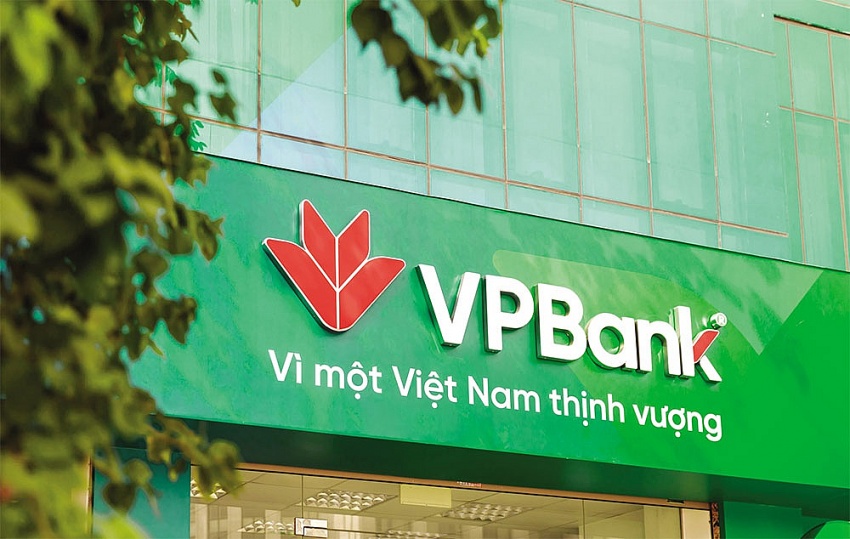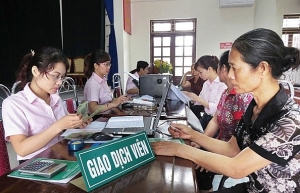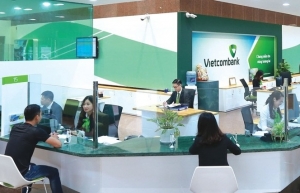Charter capital boost offers new credit room
Hanoi-headquartered VPBank has received written approval from the State Bank of Vietnam (SBV) for stock issuance to increase charter capital from equity sources.
After successfully raising capital, the bank’s charter capital is anticipated to reach VND67.4 trillion ($2.93 billion), making it the largest lender in the system in terms of charter capital.
 |
| VPBank is looking to offer up to 15 per cent of charter capital to investors from abroad, Le Toan |
Furthermore, VPBank also aims to privately offer up to 15 per cent of its charter capital to foreign investors, lifting its overall foreign ownership stake to no more than 30 per cent. By doing so, it is anticipated that the bank’s charter capital would grow to VND79.3 trillion ($3.5 billion).
Although the private placement of 1.19 billion shares, equal to 15 per cent of VPBank’s charter capital, to a foreign investor was delayed owing to local and international uncertainties, the bank still anticipates completing the merger before the end of this year. Japan’s SMBC is reportedly considered the potential suitor, particularly after its acquisition of FE Credit and exit from Eximbank.
Meanwhile, MB is expecting to issue an additional 755.6 million shares, bringing its total charter capital to over VND45.4 trillion ($1.97 billion). If successful, MB will move up the ranks to become among the largest listed banks in the country by market capitalisation.
SHB last week also received approval from the SBV to increase its charter capital to $1.16 billion, and aims to reach $1.59 billion by the end of 2022. The hike will likely place it among the three largest private joint-stock banks by charter capital. In March, SHB also lifted its foreign ownership limit from 10 to a maximum of 30 per cent, signalling its ambition to tie the knot with eligible international investors.
The SBV has granted charter capital increases to a number of lenders, such as SeABank, Techcombank, ACB, Vietcapital Bank, and OCB, among others. Stock dividends, equity issuance, and employee stock ownership plans are three of these banks’ most popular strategies for raising their capacity and expanding their businesses.
A survey by Vietnam Report reveals that 36 per cent of Vietnamese banks view capital raising as the greatest challenge to growth this year, up 8.6 per cent from 2021. Meanwhile, around 55 per cent of banks claimed that charter capital hikes are the most important task for their 2022 targets, a significant increase compared to 44.6 per cent of banks in 2021.
“The fact that some banks successfully carry out their plans to boost their financial buffer was yet another element that contributed to the rise in the price of bank stocks,” said Tran Tanh, an analyst at Yuanta Securities. “This is another one of the requirements that banks are attempting to achieve as quickly as possible in order to increase their chances of being granted higher credit room.”
Some foreign banks are also following suit. CIMB Vietnam, a local subsidiary of CIMB Group, has steadily grown its charter capital over the past three years, demonstrating its commitment to the country’s long-term digital banking growth. Last month, the SBV approved CIMB Vietnam’s capital hike to VND3.9 trillion ($169.6 million).
Since the beginning of 2020, CIMB Vietnam’s user base has increased by more than 250 per cent thanks to its digital-enabled financial services.
International ratings agency Fitch believes that Vietnamese banks that have yet to comply with Basel II will need around $600 million in fresh capital to fulfil the Basel II minimum capital adequacy ratio (CAR) requirement of 8 per cent by the implementation deadline in January 2023.
“However, Vietnam’s banking system is thinly capitalised relative to operating environment risks and international peers,” Fitch commented. “We estimate the banking system would require up to $10.7 billion (equivalent to 2.9 per cent of GDP) in additional capital to ensure loan-loss reserves covered potential losses from all problem loans, while simultaneously maintaining a CAR of 10 per cent.”
 | Policy credit helps push back black credit Concessionary policy credit with long duration has helped needy families to improve their household economy while avoiding the risks of black credit. |
 | Squeeze in allotted credit room for commercial banks The rapid expansion of credit and lending activities in the first few months of this year have prompted commercial banks to run out of credit lines, which had been temporarily allotted by the State Bank of Vietnam at the start of the year. |
What the stars mean:
★ Poor ★ ★ Promising ★★★ Good ★★★★ Very good ★★★★★ Exceptional
Related Contents
Latest News
More News
- Tax sector wraps up 2025 and sets priorities for next year (December 25, 2025 | 14:00)
- A tipping point for digital and hybrid wealth management in Vietnam (December 23, 2025 | 13:33)
- $250 million deal targets women-owned SMEs, sustainable agriculture (December 22, 2025 | 17:40)
- Stock market posts resilient 2025 performance (December 19, 2025 | 18:17)
- Citi Vietnam receives 2025 AmCham CSR recognition (December 19, 2025 | 16:35)
- As global green supply chain reshapes, will Vietnam be left behind? (December 19, 2025 | 08:00)
- Banks gear up for massive capital increases (December 18, 2025 | 17:04)
- Securing capital and efficiency for Vietnam’s 2026-2030 growth ambitions (December 17, 2025 | 10:00)
- Energy sector in need of blended finance mechanisms (December 17, 2025 | 09:00)
- Vietnam still has room to mobilise capital for sustainable growth (December 17, 2025 | 08:57)

 Tag:
Tag:





















 Mobile Version
Mobile Version